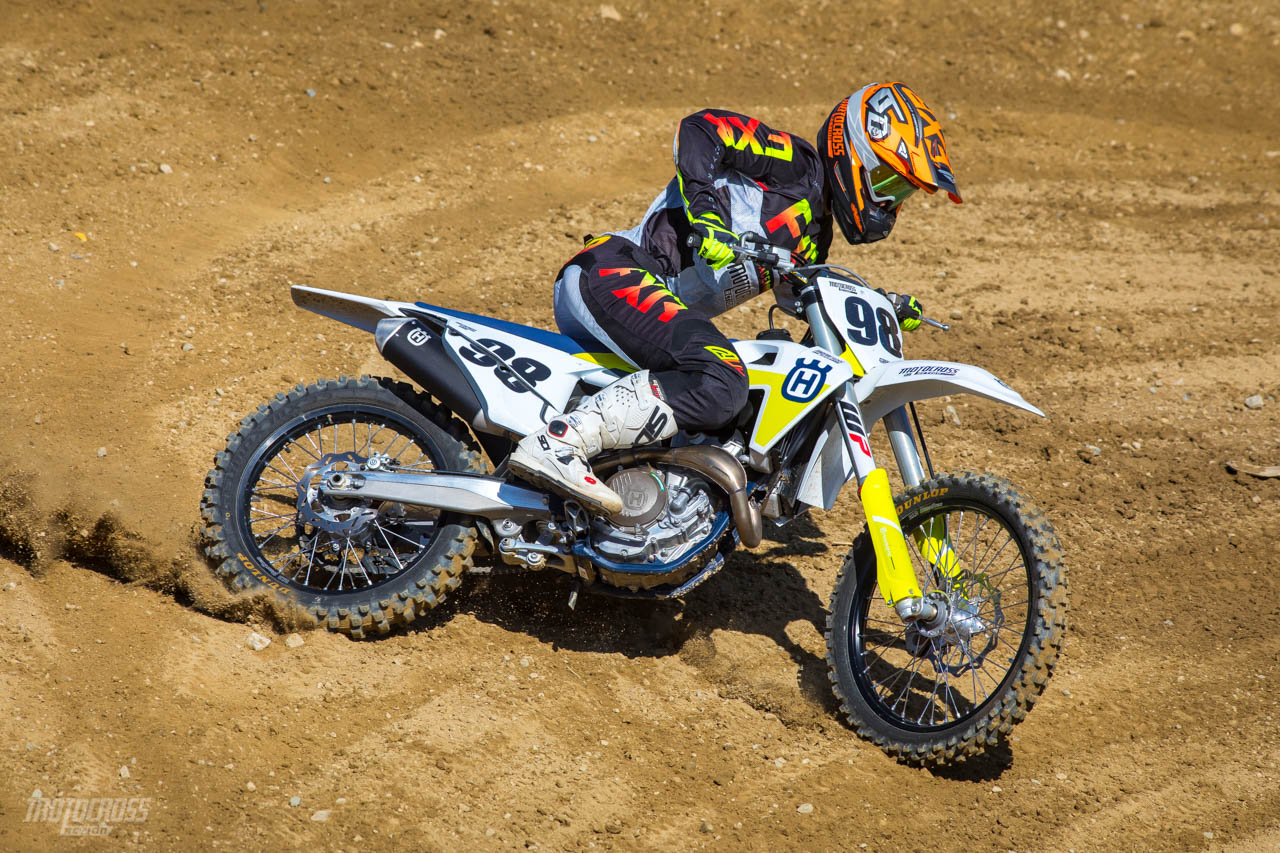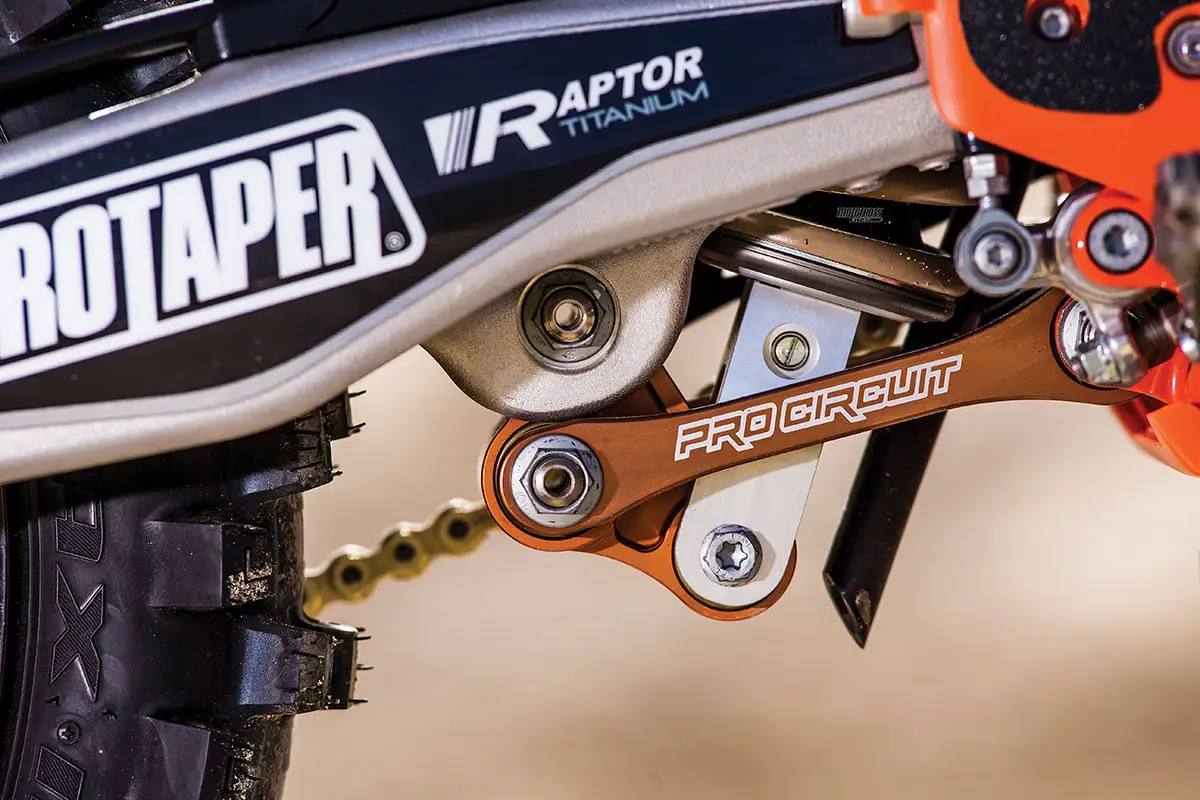TEN THINGS ABOUT LOWERING AND RAISING MOTOCROSS BIKES

(1) Geometry. Each motorcycle’s chassis is designed to work in a specific way, and when the frame geometry is altered, the handling characteristics of the bike change—sometimes for the better, but more often for the worse. In 2019, the Yamaha R&D department actually helped Justin Barcia and the factory Yamaha team by reintroducing them to the stock YZ450F. Surprisingly, after going back to stock, Justin and the team were able to find more comfort from their works bikes. Be careful when adding parts to your bike. Stock isn’t always as bad as you think.
(2) Shorter bikes. Over the years, motocross bikes have gotten taller and taller. Most modern riders would be shocked by how small, low and short a mid-1970s motocross bike was. In 2021, Husqvarna took the bold step of lowering the height of its motocross models. Husqvarna shortened the outer fork stanchions and inner cartridge rod on the forks by 10mm to retain the same relationship the valving had previously. To lower the rear end, Husqvarna lengthened the linkage arms, changed the bell crank to bring the rising rate back to its original settings and raised the shock’s seal head 6mm to limit shaft travel (to keep the rear tire from hitting the fender).
(3) Tall-friendly. The top triple clamps on Japanese dirt bikes have fore and aft mounting holes with reversible bar mounts that can position the handlebars in four different locations. In total, the typical Honda, Yamaha, Kawasaki or Suzuki bar mounts offer 35.5mm of fore/aft adjustability. This allows tall riders to push their handlebars forward and shorter riders to pull them back.

(4) Footpegs. Kawasaki equips the KX250 and KX450 with adjustable footpeg mounts. The benefit of a 5mm-lower peg option is that taller riders’ legs have more bike to squeeze, and their legs aren’t as severely bent. Additionally, raising or lowering the Kawasaki pegs can make the handlebars feel higher or lower when standing. As a rule of thumb, tall riders benefit from lower footpegs since they don’t have to bend their knees as much when sitting. For bikes without adjustable footpeg mounting holes, there are aftermarket footpegs that can be raised and lowered (or you can have teeth welded onto the top of your existing pegs to make them taller).
(5) Free fix. The cheapest way to lower a motorcycle is to raise the forks up in the clamps and lower the sag on the shock. If your suspension is set up for your weight, we don’t recommend straying far from your favorite settings (usually around 105mm of race sag). But, if your sag numbers are less than 105mm and the bike feels tall, try loosening the preload on your shock spring to allow the bike to sag down to more than 105mm. Some MXA test riders liked their sag in the 106–108 range on the 2021 Yamaha YZ450F. We ran the 2018–2019 Honda CRFs closer to 108mm to 110mm.
(6) Lowering link. A longer shock linkage lowers the rear of the bike by rotating the bell crank so that the shock clevis is lower on the frame. That rotation also makes the shock stiffer initially because the movement of the bell crank changes the rising rate’s starting point on the damping curve. Many suspension companies offer not just longer linkage arms but a revised bell crank to achieve the dual purpose of a lower seat height and improved shock performance. Longer link arms can bring the seat height down as much as 1 inch. When using a lowering link to drop the rear, make sure to raise your forks in the clamps by at least 2mm to balance the bike.

(7) Subframe. Most factory riders use cut-down subframes to lower the rear ends of their bikes. To lower a subframe, you have to cut 5 to 10mm out of the subframe’s aluminum struts. This will allow the seat height to drop approximately 1 inch. Husqvarna’s carbon/plastic subframe cannot be cut down.
(8) Shorter shocks. Shocks can easily be shortened at your local suspension shop by adding a spacer between the stop plate and seal-head bumper. Beware, shortening suspension affects the shock’s damping. Plus, with travel being decreased, the suspension’s stiffness must be increased to compensate.
(9) Shorter forks. Forks are more complicated to shorten, because when you limit travel with a spacer, the distance between the fork bushing and mid-valve will be reduced at full travel. This will cause a spike in the damping, which is why Husky shortened the stanchion tube when it shortened the cartridge rod on the 2021 motocross model.
(10) Seats. Shorter riders often elect to run a cut-down seat to help get their feet closer to the ground, while tall riders opt for taller seats. A lower seat enhances cornering and stability by lowering the rider’s center of gravity; however, you are removing the cushioning effect of the foam on hard landings. A taller seat can hinder cornering ability, but some tall riders prefer it anyway.




Comments are closed.